People ask me why I don’t work with a professional theater company. I say it’s because I love working with young people, seeing them learn new skills. I get the same kind of question about my clothing: why don’t you sell your work in high-end stores? The answer is, because then my friends couldn’t afford them.
—Judy Cooper Lyle
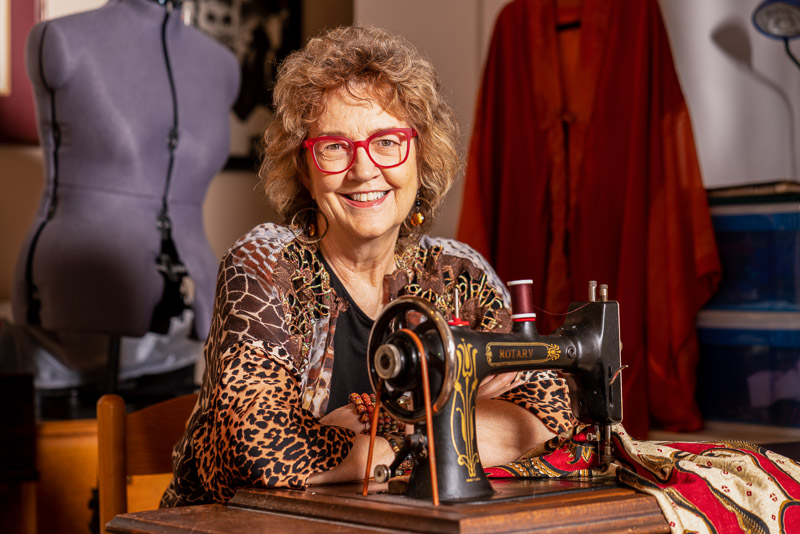
North Dakota Farm Girl
I grew up in Sutton, North Dakota, a farm town 120 miles northwest of Fargo. The closest “big city” was Jamestown, fifty miles away. We’d go there once a month for everything. It was a big adventure. We got to stop and have lunch…
My dad was socially conservative. My mother was more open to alternative ideas. She was a flapper back in the day. When I knew her, she was a force. She could drive truck, milk cows, bake bread three times a week, play poker and have her whiskey water at the end of the day. She smoked for 72 years and still lived to be 95. I named my clothing design company, Phyllis, after her. I miss her everyday.

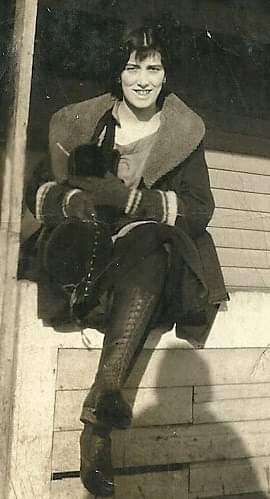 Judy’s Mom, Phyllis Pratt, 1924
Judy’s Mom, Phyllis Pratt, 1924
Learning Community-building in the North Dakota Farmers Union
My family were active members of the Farmers Union in Sutton. My Dad was on the board. The big corporate farms had the Farm Bureau that represented their interests. The Farmers Union was for family farms. It provided a way for farmers to work together to save the family farm.
We didn’t succeed. Corporate farming took over. Our own story of farm loss began in 1956 when Dad had a midlife crisis, sold the farm, moved to Staples, Minnesota, and bought another farm. The land was different. We couldn’t grow the same crops. We all hated it. My mother always said she didn’t know why she signed those papers. That farm was not successful. We only lived there a year. We moved back to Sutton, but in the process lost a lot of money. We were never able to buy again. We rented land. Everything we did after that was on a much smaller scale. The place we rented was never home to me.
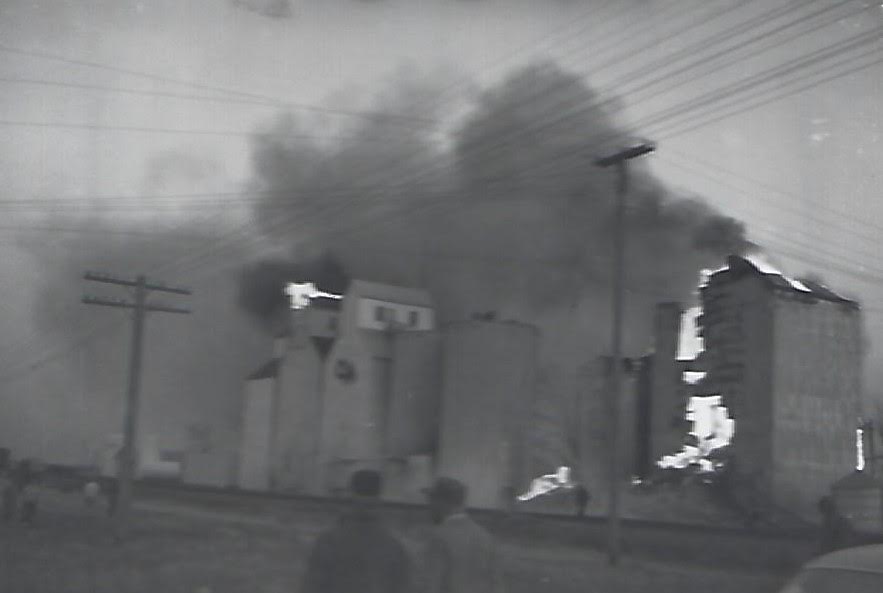
But the Farmers Union was good for me. We had monthly meetings in the Sutton town hall. Kids could take classes, like “world events.” I went to Farmers Union camp, starting at age twelve. I was most interested in “youth leadership.” I still am.
At seventeen I went to all-states camp, with the National Farmers Union in Denver, Colorado. That was the first time I ever met a person of color. There were people from Brazil, and the African continent. It was my conduit to the wider world.
Moorhead State
I started college in Valley City, North Dakota, but soon transferred to Moorhead State so I could be a theater major. It was a wonderful school for theater. I was into the tech side of theater. I studied lighting, directing, costuming, and production. I was able to study costume design with Aubrey Wilson, a designer for Broadway shows. He told me, “I have not met anyone with such an innate sense of color.” It was the highest compliment.
During the summers I was a camp counselor for the Farmers Union. We also did “contact work” — visiting farmers, learning their stories and encouraging them to be involved in the union. I still get together for an annual retreat with four women who were camp counselors with me. All of us ended up in human services, one way or another. We all attribute that to the Farmers Union.
My junior year—1968—I joined a group protesting ROTC on campus. I got my picture on the front page of the Fargo Forum. My boyfriend was on a submarine off the coast of Vietnam at the time. When he found out about the photo, that was the end of our relationship. Years later he told me, “You know, you were right.”
Recently he discovered he was Ojibwe. He became a pow wow drummer, and leader of sweat lodges. He was quoted in the Fargo Forum not too long ago, speaking out when a Native woman was murdered.
After college I wanted to move to Minneapolis. I found a job at Norwood Young America, teaching junior high art classes. I also directed the class play. It had aging strippers in it. My careful wording got it past the administrative sensors. The community came out in force. They had never had a full play production in the junior high. Years later the young woman who was my stage manager, moved to the Twin Cities and became the stage manager for my theatre company.
Chicano Studies and Teatro Latino
When I was 24, I went backpacking in Mexico for six weeks with some girlfriends. It was a life-changing experience. This young man I met in Mexico decided to come back with me. We smuggled him into the country. They stopped us 100 miles from the border. My girlfriend called her uncle, who wired us bail money. He stayed with me in Minneapolis for two months before he had to go back. Immigration was very different back then.
After I came back from Mexico, I signed up for Spanish classes at Chicano House, located next to what is now Mixed Blood Theater. That is where I met Eduardo Sandoval, my first husband. In 1971 Eddie and I marched for the establishment of the Chicano Studies Department at the University of Minnesota. The first person who taught there, Alfredo Moreno Gonzales, was a mentor to all the young Chicanos, including Eddie. We would have parties at my house and the guys would sit at his feet.
Eddie, I, and others, started the first Latino Theater Company, Teatro Latino de Minnesota, in 1981. I got a grant to bring in Rodrigo Duarte Clark from Teatro Esperanza in LA, on a residency. He directed the first show. The Minneapolis Foundation didn’t believe the Latino population in the Twin Cities was big enough to support a theater. To convince them to give us a grant, Eddie and I stood outside in the frigid cold as people went into Mexican dances on the West Side of St. Paul, soliciting signatures from people saying, “Yes, I would like a Latino Theater.

Pillsbury House
I worked at Pillsbury House as the Cultural Arts Director and Center Director (1979-87). That was my favorite job. We had cultural heritage festivals, live shows, and concerts. Everything we did was by and for community. At that time we were housed at Waite House. People came to our productions because they wanted to see their neighbors perform. We would have big Thanksgiving dinners. That position taught me how to take charge.
I think they do similar things now. I’m not sure. I know the Pillsbury House theater today is “equity.” They work with professional actors. They are doing great things, but it would be nice if they would still do one or two shows a year that are community theater.
Urban Spectrum Theatre Company, 1974-Present
When I first heard the word “multicultural” I thought, “Oh, that’s what the Urban Spectrum Theatre Company is. I just thought we were doing community theater. In fact our first name was “Real Community Theatre.” We stood for creating quality productions by and for the inner city. We were donation-only back in 1974. I think we were the first to do that. We toured the parks with children’s shows. We staged big shows that could incorporate as many people as possible.
In the 1990s we began bringing older more experienced theater people, to mentor young people. Our speciality is combining history with theater. We will pick a person from history or a theme and do a show around that. We did a show focused on Josephine Baker when we were in residence at Sabathani in 2005. We did a show on the Blue—So Blue—and performed it at a local bar. Honeydripper— about the beginning of Rock and Roll—was based on the John Sayles movie.
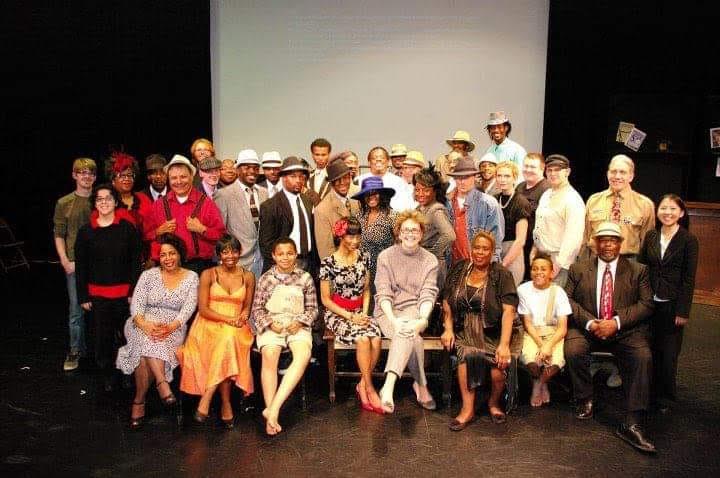
I saw Honeydripper the movie, at the Parkway Theater and fell in love with it. I got up the courage to ask John Sayles for permission to adapt it for the stage. To my surprise he was approachable. I talked to him, not an assistant. He charged me no royalty, as long as he had the right to decide if and when it was produced again. He put me in touch with music publishers and advised me on which ones would work with me. As a result, our royalty costs for music were only $790. I got MRAC and Walker Foundation grants for that production. We had a fundraising party. We went into that show with $15,000. That was incredible for us. We did Honeydripper at the Old Arizona theater, two weekends. There were 34 people in that cast. People lined up around the corner to get in. We turned away the Mayor of St. Paul.

Sayles gave a reading at Magers and Quinn in 2011. It was thrilling. The star of our show—Al Drears– came with me. In the movie, his part is played by Danny Glover. John Sayles told him that Danny Glover doesn’t actually know how to play the piano. Al’d tell everyone, “I play my own music. Danny Glover doesn’t.”
Al died four years ago, young and unexpected. I am not over that. He was amazing and so is his family. Al’s mother gives concerts at her home in Harlem with Jazz greats. Back in the day she hosted Oscar Peterson —so Al came by his talent honestly.
In 2016-18, we did a jazz music and dance interpretation of Langston Hughes poems.We called it Warm Dark Dusk after the title of one of Hughes’ poems. My cousin, Florence Lyle, did the choreography. She was a professional dancer for 20 years, studied with Alvin Ailey and toured with Al Jarreau and Marvin Gaye.
Thoughts on interracial marriage, racism in Minneapolis, and colorblind casting.
Marcus Lyle , my second husband, died at age 50 in 2005, shortly after the Josephine Baker show. He was younger than me. I thought I would have him for the rest of my life. His cousin is Bobby Lyle the jazz musician. Marcus was born and raised here. His parents came up from Mississippi in 1946 to escape Jim Crow.
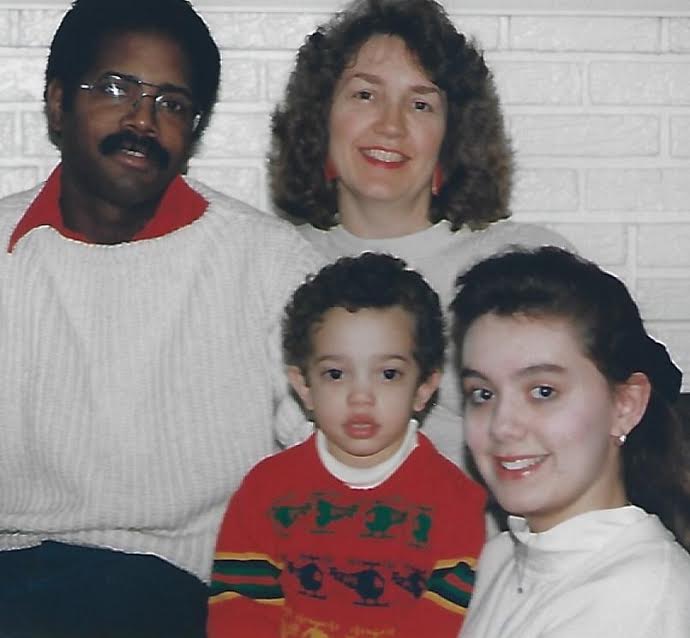
We had few problems as an interracial couple. My family wasn’t real happy about either of my marriages at first, but as soon as they met Eddie, and then Marcus, they thought they were wonderful.
Minneapolis is very racist. It is under wraps. Marcus worked at the Strib in the print shop . It was pretty redneck. The pay was good, but he had to put up with comments like, “You just got hired because you’re Black” and “We don’t even think of you as Black,” erasing who he was.
Urban Spectrum Theatre actors are about 80% Black. That is why we do so many shows that focus on the Black experience.
I have never embraced colorblind casting .I have had lots of arguments about this. I think that is denying somebody’s culture. Sure, there are particular parts, where the person could be any race, but… for example, someone did Streetcar and made Stanley Kowalski a Black Man. I didn’t understand the point. The play is a period play. It tells a story about the White working class. I wouldn’t cast a White man as Langston Hughes. You couldn’t make the family in Raisin in the Sun, White. That kind of colorblind casting is like saying, “I don’t see race.”
Update After Murder of George Floyd May 26 2020
Today I am still experiencing stress and trauma over George Floyd’s murder. I was watching it in horror on social media just hours after it happened. I kept thinking, “surely he’ll move his knee.” And the minutes kept ticking by as he begged for his life, and the cop didn’t move his knee. And then he died. And the city erupted. There’s no way I can express how I feel, or imagine how it feels to be black and live life often in fear. I am the mother of a black son, part of a black family, with many black friends. But I cannot pretend to know how they feel. I can only know that I can continue to work for what’s right.
My daughter posted this.
“I recently discovered who Candace Owens is. A part of me wishes I hadn’t, because she stirs a lot of disgust in me, right down to my core. She’s absolutely everything I was taught NOT to be, growing up. She’s everything I’ve never been and everything I will never be. Ya see, I was taught not to NOT see color, I was taught not only to see it, but respect it and learn about it. All of the beautiful colors in our community. I’ve never known anything else but to be surrounded in diversity and take little bits and pieces of it with me wherever I go. To always do my best to educate others and hopefully promote as much change as possible. I grew up spending summers in my white mother’s small hometown in ND, with my grandma and aunt…eating cinnamon rolls and watching them prepare every baked good a kid could dream of. I grew up spending weekends at my Mexican grandparents’ house in St Paul…eating tamales and watching my grandmother make guacamole and tortillas. I saw small town close mindedness, I saw big city struggles. I listened to stories my grandmother and aunt would tell me about when my mother was a girl, growing up on the prairie. I listened to stories my grandfather would tell me about his father riding with General Pancho Villa (Google him). I spent days after school watching my mom work with her colleagues at the community center she managed. That center is literally three blocks north from where George Floyd was murdered, and we lived about four blocks north of that. I grew up knowing that my dad did good things for his brown community at a Chicano community center he worked at. It wasn’t until years later, when I was 22, at his memorial service…standing room only, story upon story being shared at the pulpit of men and women my dad quietly helped…food for the hungry, money to help family members cross the border. I grew up knowing and loving my black stepfather and his family. I grew up never really knowing the struggles he went through, because he never talked about them…bullied at his job by bigoted members of his union, stopped while being black (it IS a thing), in his Mercedes because cops thought that you must be a thug or a drug dealer if you’re a black man driving a nice car. On vacation in northern Minnesota, and being pretty much the only black person in sight. Until…”Judy, look it’s another black person!” I’m now 46, a nice home in the suburbs, raising a beautiful and innocent baby of many shades…Irish, English, Native, Mexican, Spanish, Italian, Persian, Norwegian. Now is the perfect time for me to educate her on racial beauty and equality. Now I vow to raise her to also SEE color, to respect it. And I will teach her to teach as well, to teach others to see and respect color. To always be thankful, present, intentional, kind, sensitive, joyous and empathetic. I recently discovered who Candace Owens is. Part of me wishes I hadn’t, but ya know what? I’m glad I did, because now I know what we’re up against and I’m going to fight.”
Minneapolis Interview Project Explained.

